Marcross to St Donats
This is a circular walk from Marcross Church through fields and woods to St Donat’s Church, returning along the cliffs.
Holy Trinity Church, Marcross, retains many of its Norman features but with later 13th and 14th century additions, including the distinctive saddleback tower.
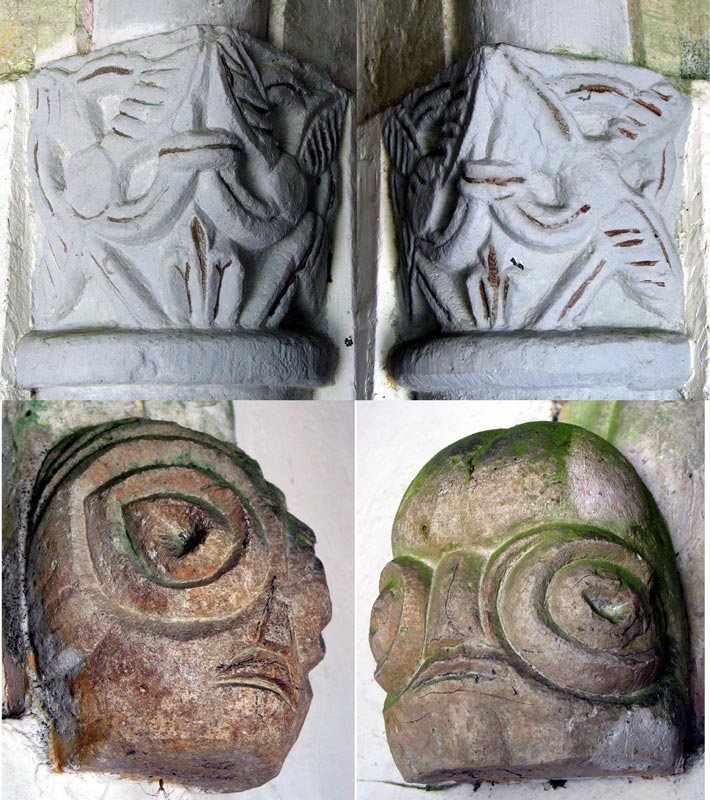
The Norman south door is decorated with leaf foliage and grotesque heads.
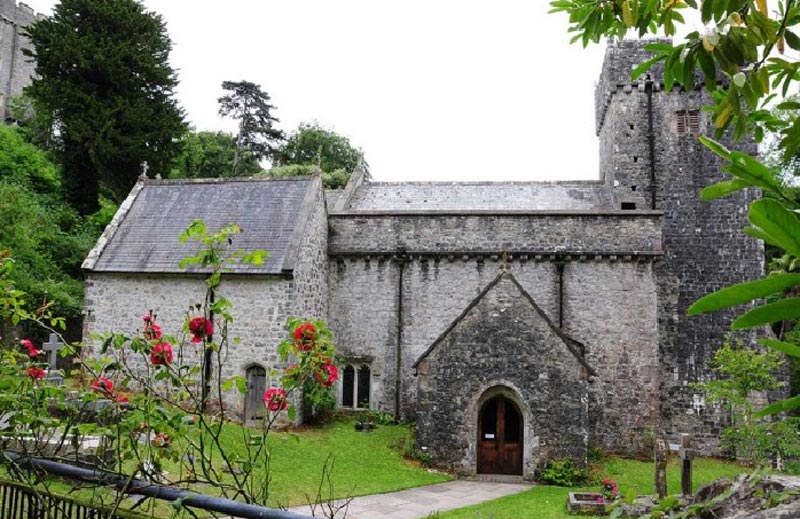
St Donat’s Church, nestling in the lee of the Castle, is dedicated to St Dunwyd, a contemporary of St Cadoc. It dates from the 12th century, with many additions and changes in the centuries since. It has some fine memorials to the Stradling family, Victorian stained glass and a Millennium window. In the churchyard is a 15th century Calvary Cross, retaining its original head with a representation of the Crucifixion on one side and the Virgin Mary on the other.
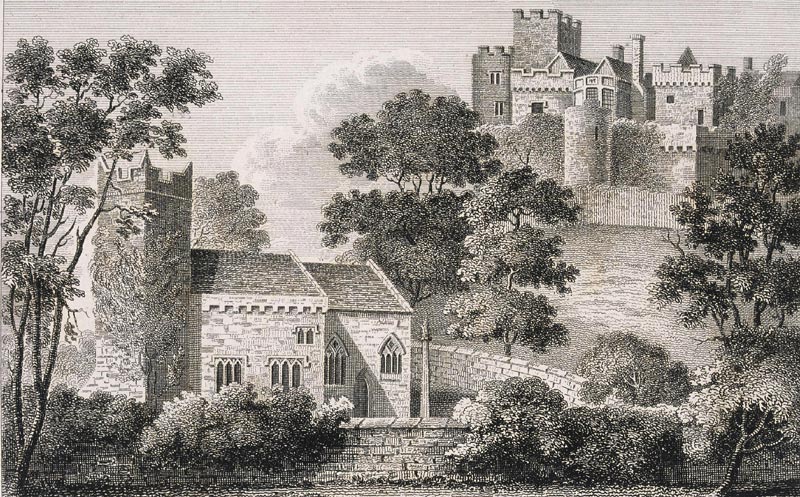
Start Holy Trinity Church, Marcross CF61 1ZG (SS 9218 6913)
Getting there B4265 from Bridgend or Llantwit Major; the lanes to Marcross are signed from the road. At Marcross, turn down the lane alongside the Horseshoe Inn carpark to the church. Limited on-street parking by church. Alternatively, start the walk at the carpark at Nash Point, ½ mile beyond the church. 303 bus from Bridgend or Llantwit Major to Horseshoe Inn, Marcross.
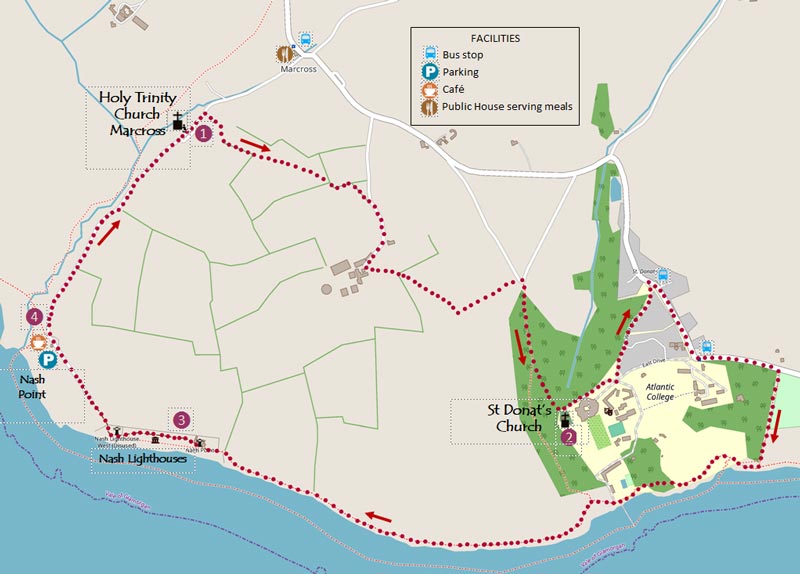
Walk
Note: Much of this walk follows the Vale Millennium Heritage Trail—look out for the symbol on way-markers.
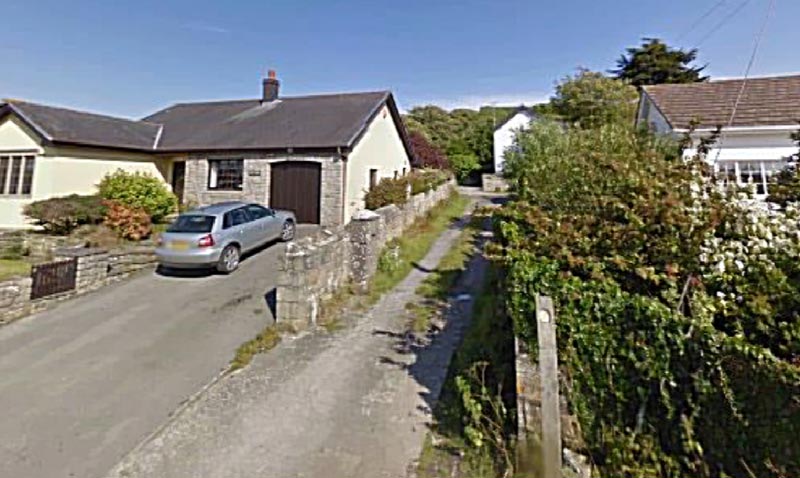
From the Church (1), walk a short distance up the lane in the direction of the Horseshoe Inn. On the right hand side there is a signed footpath between two bungalows; follow this to a stile.
Keep to the footpath through the field with the hedge on your left, following its left turns, but ignoring a footpath turning to the left. You will reach a stone stile; climb over and follow the hedge through a gate onto a road. Turn right into the road, and go down to Marcross Farm, with views of the sea before you.
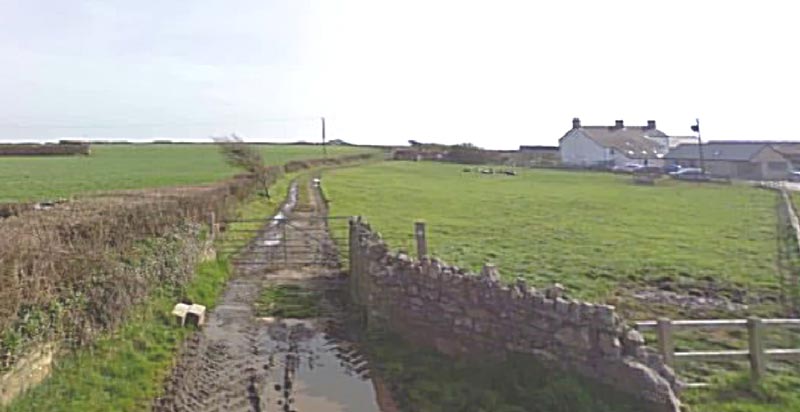
As you approach the farm, take the left fork through a gate, and then after 100 yards cross over the stile on the left. Another stile opposite leads into a large field. Walk diagonally right to a stile in a gap in the wall. Turn left along the path to the stile in the wall at the bottom of the field. After the stile follow the path around a barn to another stile which takes you onto the lane leading down to Parc Farm. Between the farm house and a garage is a gate; the path through it goes into the woodland of Cwm Hancorne.
This rough downhill track leads onto the road just before St Donat’s Church (2).
Before going into the church, look up at St Donat’s Castle. There have been fortifications here since the iron age, but the present castle was first built by the de Haweys and Stradling families in the 12th century. There were restorations in the 19th and early 20th centuries, but in 1925 it was purchased by the newspaper publisher William Randolph Hearst, who undertook a major expansion. In 1962 it became home to UWC Atlantic College with some 350 students from over 100 countries.
The mission statement of UWC Atlantic College states that it “is committed to making education a force to unite people, nations and cultures for peace and a sustainable future.” In the Church, pray for peace in the world and a sustainable future for our planet through that uniting of peoples and cultures that is so evident in the students here, a number of whom worship in this church.
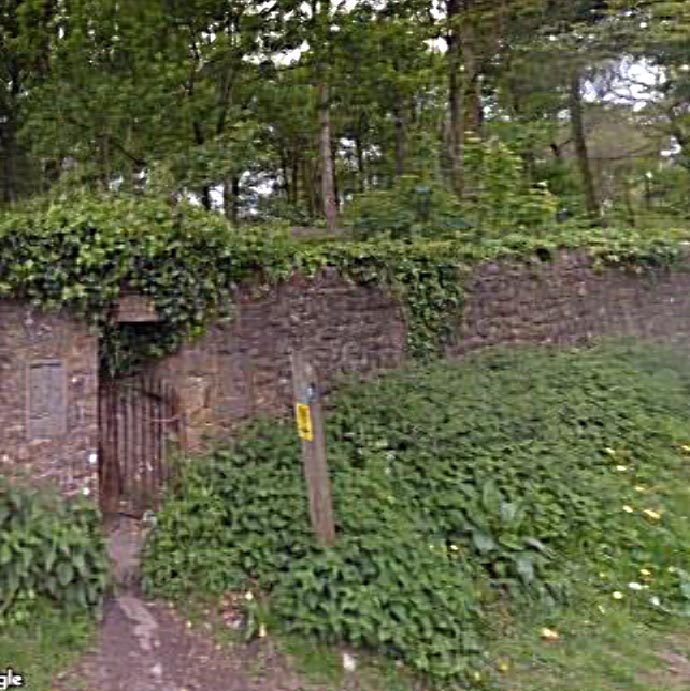
Leaving the church, walk uphill along the road, with St Donat’s Castle on your right. Follow the road around the carpark and bear left along West Drive through the College grounds. At the main road turn right, and walk along the road for 0.4 miles, passing the main College entrance, and near the end of the lay-by on the right, go through a kissing gate set within a wall. This leads you onto the footpath alongside King George V playing fields.
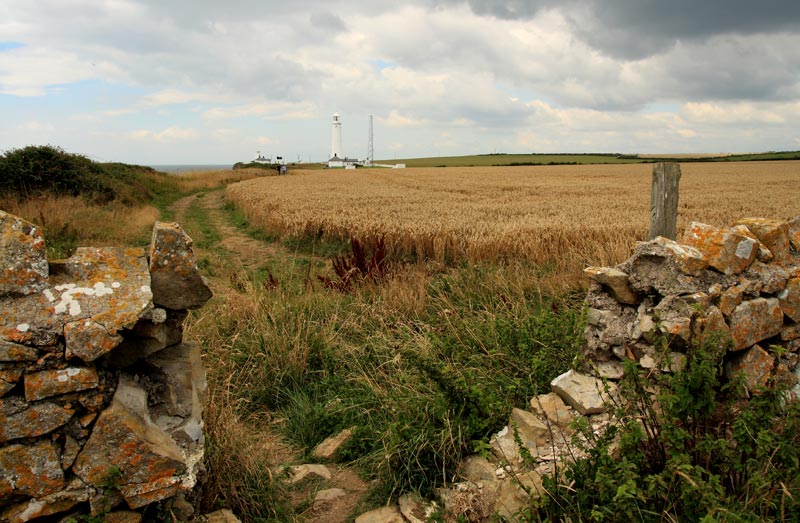
Follow the footpath down to the coast, passing through a gate to reach the Wales Coast Path. Turn right on the path, and follow it along the coastline below Atlantic College and then into a wood. Keep left into a field, following the path along the cliff-top with views of the Nash Point lighthouses ahead.(3)
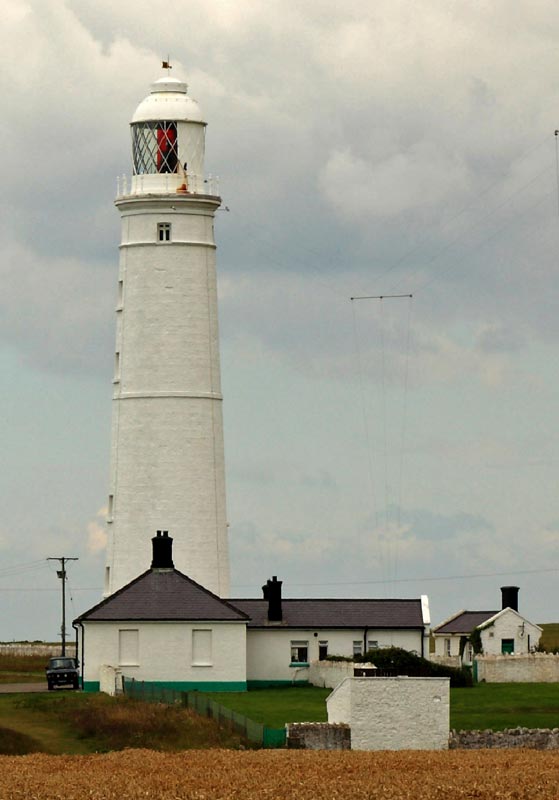
The high and low lighthouses and the fog signal were built in 1831-2, the lights automated from 1998.
Here, reflect on the opening words of St John’s Gospel ‘The light shines in the darkness, but the darkness has not overcome it’, remembering that Jesus is the light of the world, calling us to be lights also.
Go through the lighthouse complex, joining the road leading to the Nash Point carpark. The lumpy ground indicates the remains of a Neolithic long cairn known as Cae’r Eglwys. Nash Point (4) itself has the remains of a cliff-top promontory fort, with several rows of banks and ditches.
Continue inland along the road from the carpark for ½ mile back to Holy Trinity Church, Marcross, the end of our pilgrimage.
At the church, pray for the mission and ministry of the Glamorgan Heritage Coast parish—and reflect on this walk, and what you have seen and heard on the way, giving thanks for the blessings of this pilgrimage.
If returning to Wick and beyond or Llantwit Major by bus, walk up the road through the village for ¼ mile to the T-junction at the Horseshoe pub. Turn left for the bus stop just past the pub.
OS Explorer 151 Cardiff and Bridgend
Public Transport
The 303 NAT bus runs hourly in both directions between Bridgend and Llantwit Major through Wick, Marcross, and St Donat’s connecting with the 304 to Barry, and trains to Cardiff. For up-to-date travel information visit www.traveline-cymru
Refreshments
The Horseshoe pub in Marcross;
Café at Nash Point Car Park.